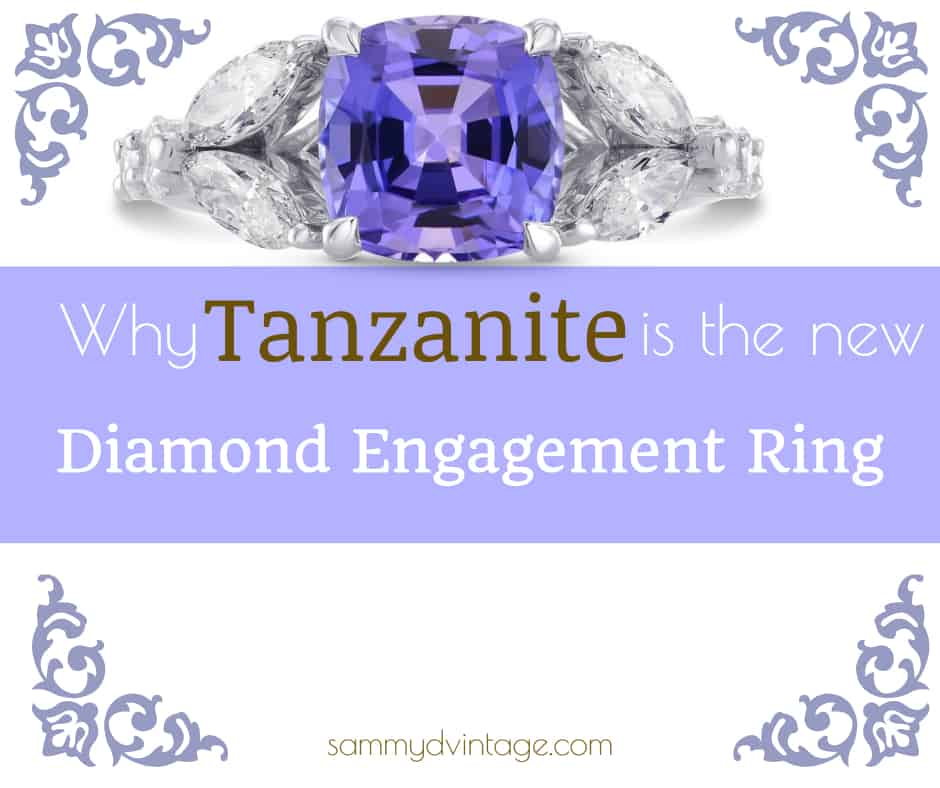
When it comes to engagement rings, diamonds take the wedding cake. People view this indestructible stone as a symbol of eternal love and tradition. However, diamonds weren’t always the go-to symbol of love and devotion. Historically speaking, only a few diamonds were given as a symbol of engagement and those incidents were reserved for the extremely wealthy.
It wasn’t until the late 1940s, when DeBeers created the famous marketing slogan, “A Diamond is Forever” that the gift of a diamond ring to signify engagement became common practice.
As of late, more suitors are choosing Tanzanite engagement rings instead of diamonds. Here are some reasons why.
About Tanzanite
Tanzanite is a relatively new discovery, found in Tanzania in 1967. To date, this is the only location tanzanite is mined. It received its name from Tiffany & Co. as a tribute to its geographic location. They surmised that this exotic sounding name in conjunction with the mesmerizing blue hues made for a perfect Tiffany & Co. marketing strategy.
The fact that it went undiscovered for so many millennia and its extremely limited source make tanzanite incredibly desirable.
Tanzanite vs. Diamonds
The main selling feature of tanzanite over a diamond is its rarity. As it was only recently discovered, and only mined in a small geographic area, tanzanite engagement rings come with a certain novelty that diamonds lack. They are unique without sacrificing quality.
As you know, there is no stone harder than a diamond. Diamonds rank as a 10 on the Mohs Hardness Scale, while tanzanite comes in at a 6.5, making it ideal for jewelry. It is, however, brittle and prone to breakage in its raw form. Tanzanite is a form of the mineral zoisite, while diamonds are a form of carbon, compressed and cultivated over thousands of years.
Tanzanite Symbolism
When people buy jewelry, they often look at what a certain gemstone symbolizes. Due to its modernity, tanzanite does not have any ancient symbolism attached. It does, however, represent positivity and uniqueness, making it perfect for your one-of-a-kind relationship. It is used in spiritual practices for protection, power, and spiritual healing.
Color and Grading
Tanzanite ranges from violet to a deep indigo blue, with the latter being rarer. Depending on the stone and quality, some even have hues of pink, yellow, green, and red. The color has a direct impact on the monetary value.
Tanzanite is known for its color shifting capabilities. Your engagement ring might look violet in natural light but blue indoors. The changing color is one aspect of the gemstone that makes it appealing to wearers.
Unlike diamonds with the “4 Cs” and the Geological Institute of America (GIA) grading system, tanzanite does not have a universal standard for grading. This can make purchasing the gems challenging. While some use the GIA system as an easy way to grade tanzanite stones in a well-recognized format, it isn’t the norm.
Stones are judged based on their tone, hue, and saturation. Miners originally graded stones with AAA, AA, A, B, and C depending on their saturation levels. AAA was reserved for the purest, boldest gems. Now, you can find companies with their own scales and those that use the original scale with a marketing twist, offering AAAAA tanzanite ratings which ultimately means nothing.
The color of tanzanite can also be altered through the application of extreme heat, turning pinkish stones into a dark blue with violet flecks. This doesn’t make them any less impressive in a white gold setting but is important to know when you are comparing the price to value.
When purchasing tanzanite, or any engagement ring, visit a well-respected jeweler who is willing to answer your questions and help you find the piece that works for you. Then, go forth and put a ring on it!

